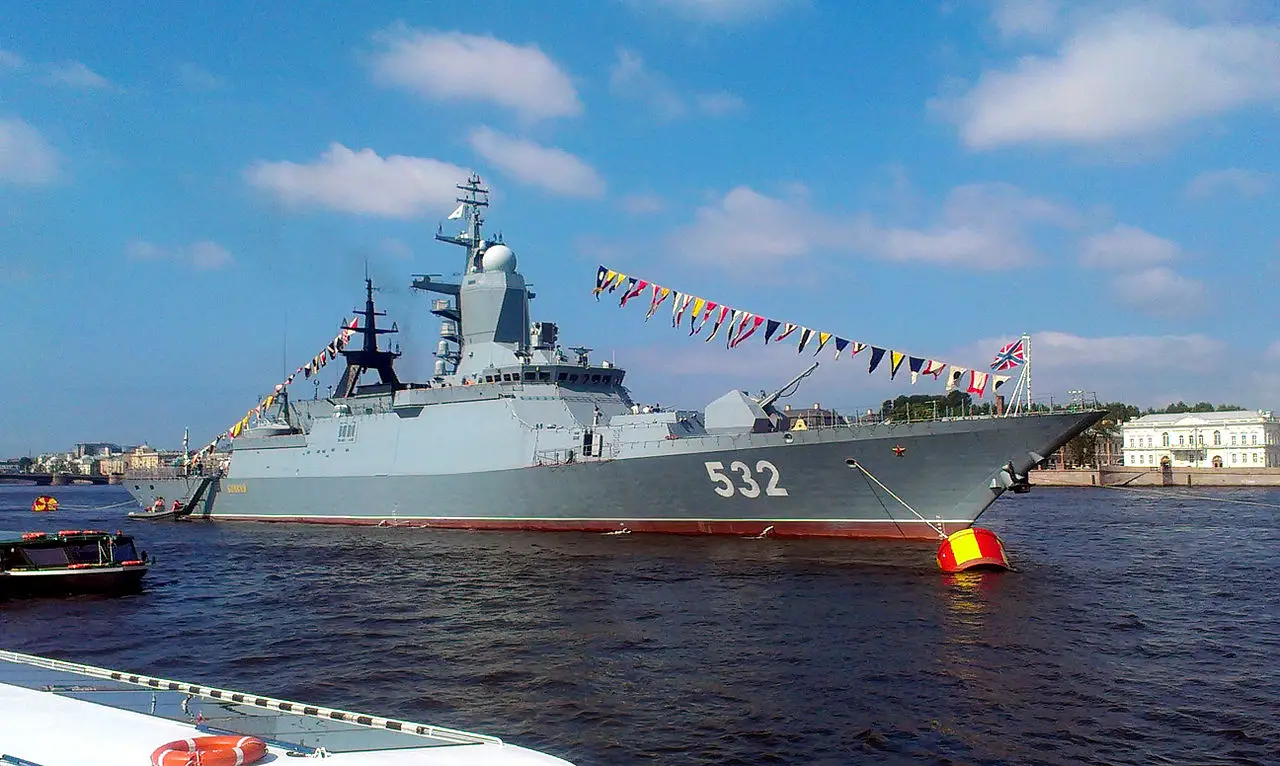As part of the planned combat training missions in the Baltic Fleet’s area of responsibility, the corvette Boykiy replenished its fuel and water supplies to the required standards from the medium sea tanker Kola. In addition, the servicemen of the detachment of counteraction to sabotage forces and means, who are also on the ships, conducted training in counter-sabotage defenÑe. In the water area of the English Channel, the corvette crew performed a set of measures to replenish fuel and water supplies while drifting and on the move. In the course of restocking in the water area of the English Channel, the antiterrorist groups, which are part of the crews of the ship and the Kola medium sea tanker, practiced all sorts of antiterrorist scenarios while staying in an unprotected roadstead.
Boykiy is a Steregushchy-class corvette of the Russian Navy, the third ship of that class. She was laid down in July 2005 and was launched on 15 April 2011. She was presented to the Baltic Fleet for final inspection by the Navy on 16 March 2012 ahead of her commissioning later in the year. On 16 November 2012 it was reported that the corvette had already passed the shipyard’s sea trials; about 70 certificates were signed then. JSC Arsenal intended to produce a 100-mm gun mount A190-01 for the corvette, and late in 2012 the ship moved to Baltiysk acceptance base for the second phase of sea trials. The Steregushchiy class (Project 20380), is the newest class of corvettes being built for the Russian Navy. Designed by the Almaz Central Marine Design Bureau, subsequent vessels were built to an improved design (Project 20381), incorporating the Poliment-Redut SAM system.
The Steregushchiy-class corvettes have a steel hull and composite material superstructure, with a bulbous bow and nine watertight subdivisions. The ship full displacement and dimensions are large for a corvette, thus it is designated as a frigate by NATO. They have a combined bridge and command centre, and space and weight provision for eight SS-N-25 missiles. Stealth technology was widely used during construction of the ships, as well as 21 patents and 14 new computer programs. Newest physical field reduction solutions were applied too. The Kashtan CIWS on the first ship was replaced in subsequent vessels by 12 Redut VLS cells containing 9M96E medium-range SAMs of the S-400 system. SS-N-27 (Kalibr type missiles) will be fitted to a larger domestic version, Project 20385.
















